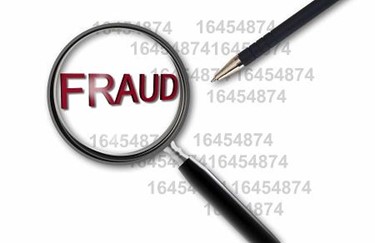4 Ways Healthcare Organizations Can Combat Payment Fraud
By Jeffrey W. Brown, VPay

A record 78 percent of U.S. organizations were the target of payment fraud last year, according to a recent survey of finance and treasury professionals last year.
Check fraud ranked highest, with 74 percent of U.S. organizations experiencing check fraud in 2017. Meanwhile, 28 percent were the target of automated clearinghouse (ACH) debit fraud, according to the survey.
It’s a sign of the dangers healthcare organizations can face when they don’t secure payment from commercial insurers and at the point of service.
The move away from paper-based check payment in healthcare received federal support in 2014 with a mandate went into effect requiring all payers to support electronic funds transfer (EFT) and electronic remittance advice (ERA) to providers on HIPAA-covered transactions.
Yet adoption of electronic payment by healthcare organizations has been slow: While all providers must accept electronic claims payment from Medicare, just 60 percent of healthcare organizations accept electronic claims payment from commercial insurers, and only half accept ERA, according to the 2016 CAQH Index.
Protecting Your Organization
The impact of payment fraud on healthcare organizations now totals $28 billion annually, making the need to shore up your organization’s defense critical. There are four action steps healthcare finance leaders can take to combat payment fraud.
Invest in real-time patient data verification at the point of care. Automated tools that verify patient demographic data at the point of service are as critical as patient eligibility checks. These technologies help to verify a patient’s identity, which is crucial to preventing payment fraud. When automated data checks raise red flags for front-desk staff, staff gain the opportunity to enlist the patient in correcting the information before care is delivered. This protects the integrity of patient data and significantly limits the potential for payment fraud.
Push for increased adoption of EFT and ERA. EFT eliminates paper-based check fraud by transmitting payment electronically to providers. The most popular form of EFT—ACH payment—also speeds time to payment, with payment from commercial insurers typically arriving 10 days sooner than check payments. When hospitals and physician practices replace checks with electronic payments from their largest payers—commercial insurers—they significantly improve cash flow, boosting their organization’s financial health.
The downside to ACH payments is that the remittance advice typically arrives separately from the payment—sometimes days later. This can cause headaches for back-end staff, who must manually reconcile payments. One option to consider: Leverage the ability of your practice management system to automatically allocate the ERA to payment on patient accounts. This eliminates manual entry for staff as well as the potential for error in manual data entry.
Make the move toward virtual cards. Virtual cards enable providers to process payment from commercial insurers using the same machine that captures credit card payments at the point of service. With virtual cards, payers make payments to providers via single-use cards, with the card information transmitted to providers through online display, fax, or mail. They are a Health Insurance Portability and Accountability Act (HIPAA) standard payer-to-provider payment method for EFT.
Virtual cards are loaded only to the exact amount of the payment. No enrollment is required to accept virtual card payments. And because virtual card payments typically are received sooner than check payments (up to 10 days sooner), they offer strong potential to improve cash flow for physician practices and hospitals.
One benefit of virtual card payments is that the explanation of payment can be included with each transaction. This streamlines workflows and eases administrative burdens associated with medical billing. Virtual cards also eliminate the risk of payment fraud, as payment is guaranteed. Paper checks are taken out of the equation, so there is no risk of stolen, lost or whitewashed checks.
There are processing fees associated with virtual card payments, just as there are with traditional credit cards. Some virtual card companies have come under fire from the American Medical Association for charging high fees. But not all virtual cards are created equal, and it’s possible to negotiate a lower rate. Negotiate the interchange fee for virtual card payments with your merchant services provider, just as your organization would for payments made with traditional credit cards. One standard approach: Negotiate lower rates based on your total anticipated volume of credit card transactions and virtual card payments combined.
Use a mix of EFT and virtual card payments. For example, many providers are establishing EFT/ERA arrangements with their largest payers, then accepting virtual card payments from other health plans and payers. It’s an approach that maximizes efficiency in collections from smaller payers while providing flexibility, reduced administrative burden and improved cash flow for hospitals and physician practices.
An Ounce Of Prevention
Tackling payment fraud is critical to a healthcare organization’s financial health, especially when the number of organizations affected is at an all-time high. Taking the time to assess your organization’s risk for payment fraud and develop proactive measures in response will strengthen your organization’s defense—and protect its reputation.
